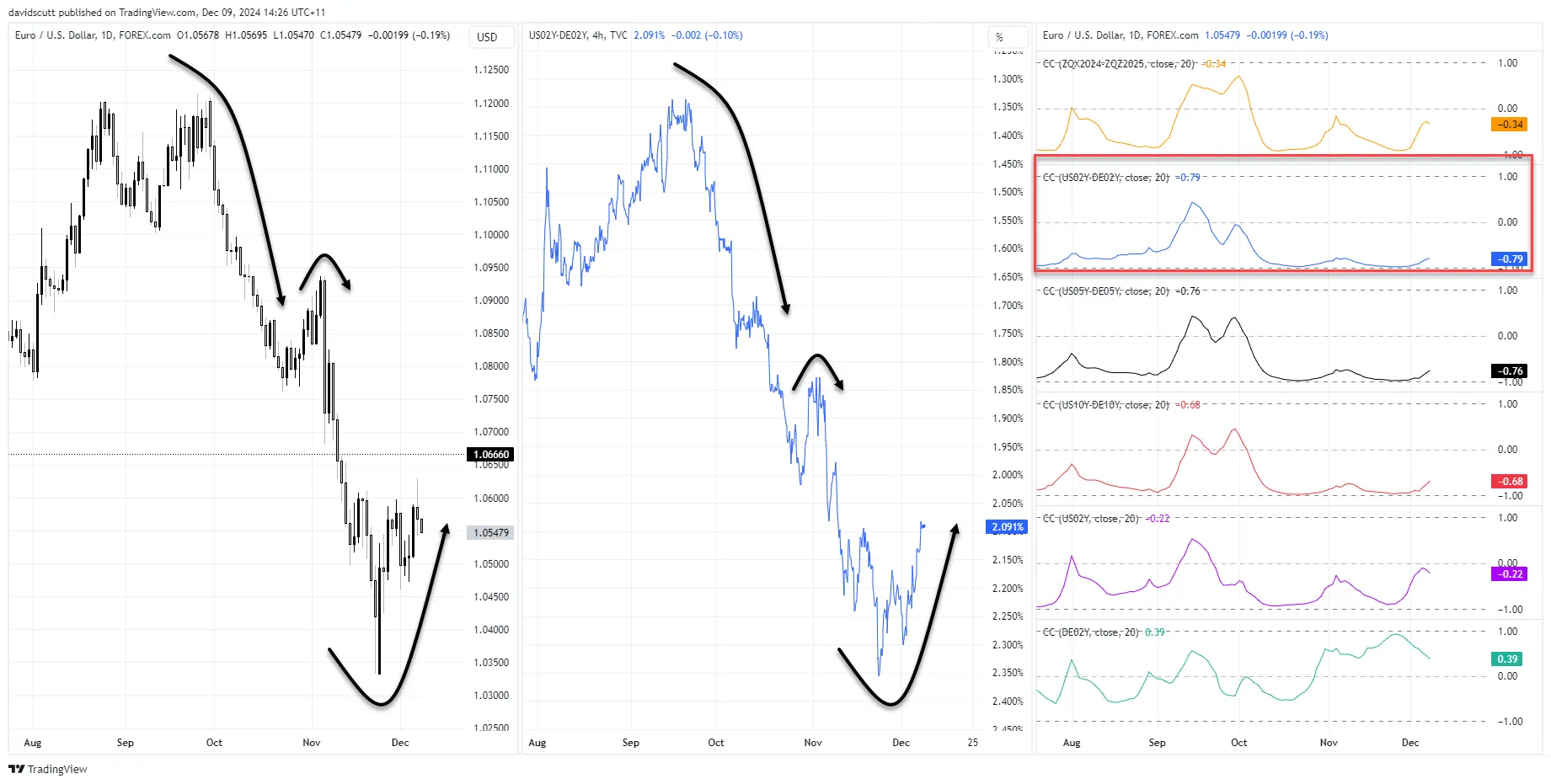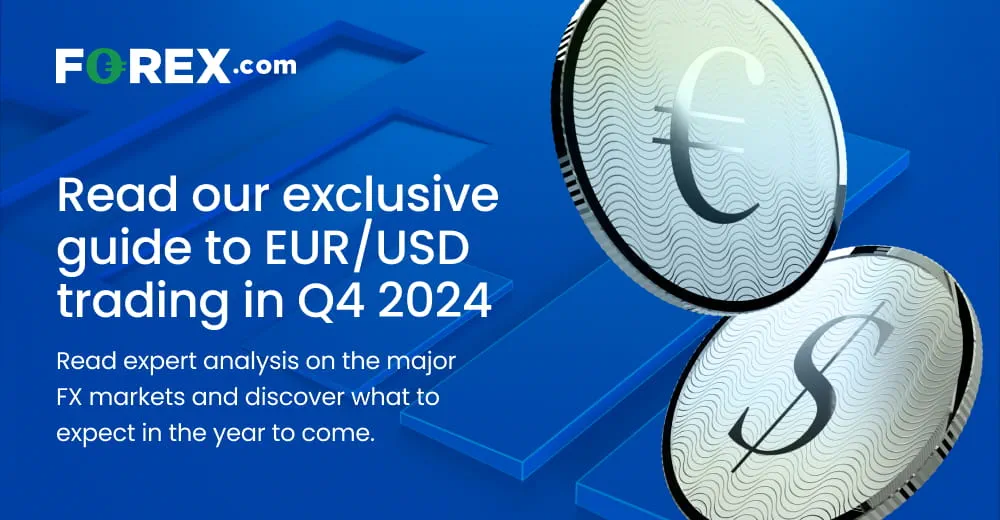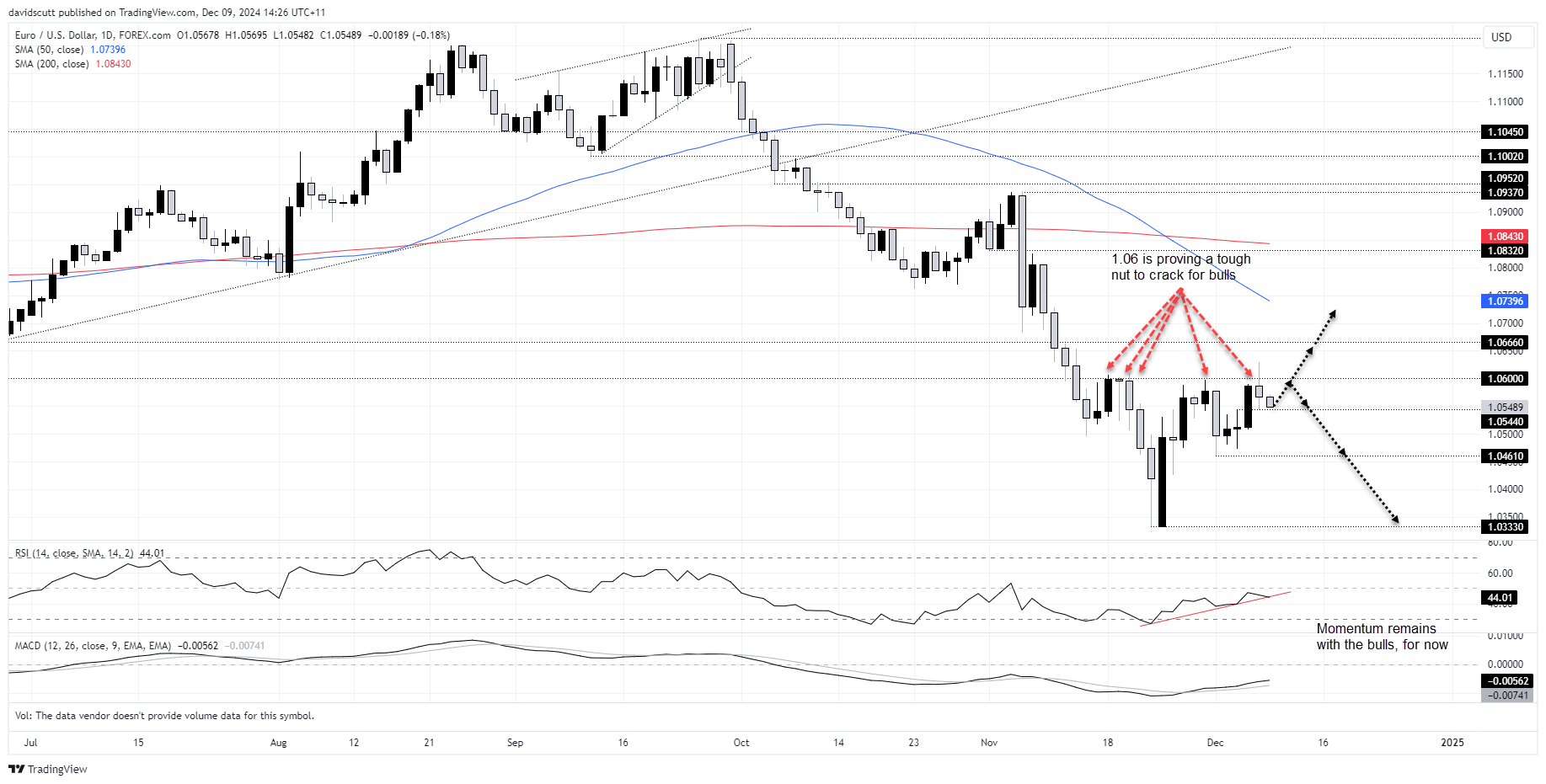- EUR/USD tightly linked to short-dated US-European yield differentials.
- US CPI, ECB decisions to shape central bank rate paths
- Strong US inflation may curb bets on further Fed rate cuts
- ECB seen accelerating cuts, posing downside risks for the euro
Overview
A compression in yield differentials between the United States and Europe has allowed EUR/USD to recover, seeing it briefly push above resistance at 1.0600 on Friday. While the narrowing in yield differentials largely reflects a recalibration of the US interest rate outlook, in the absence of a big surprise in the US core inflation reading on Wednesday, moves in spreads and EUR/USD may dictated by the ECB policy meeting on Thursday.
ECB, Fed key remain key
While the relationship has loosened somewhat in recent weeks, EUR/USD remains closely inversely correlated with US-German yield differentials, particularly at the front end of the curve, where central bank expectations dominate.

Source: TradingView
The chart above illustrates the relationship between EUR/USD and two-year US-German yield spreads, with the latter's scale inverted to emphasise how crucial rate differentials have been in recent months. It’s no coincidence that as short-dated spreads narrowed to multi-week lows last Friday following the US payrolls report, EUR/USD surged to multi-week highs.
US inflation, ECB rate cut size/forecasts in focus
With central bank outlooks driving EUR/USD moves, traders can focus on events most likely to shift rate expectations in the US and Europe.
In the US, the key event this week is Wednesday’s CPI report. Core inflation is expected to rise 0.3% in November, consistent with the prior three months, keeping the annual rate steady at 3.3%. While not the Fed’s preferred gauge, monthly 0.3% gains equate to an annualised rate of 3.6%, nearly double the 2% target.
A result in line with expectations would support current market pricing, which sees the Fed delivering only two rate cuts over the next four FOMC meetings. Cutting more aggressively with inflation still elevated could risk reigniting price pressures, especially with a robust jobs market.

In Europe, the focus is on the ECB. Both the size of the December rate cut and updated inflation forecasts will be pivotal in shaping the rate outlook. For context, here’s a link to the ECB’s forecasts from three months ago.
Markets are fully pricing in a 25bps cut at the December meeting, with a 15% chance of a larger 50bps move. Traders also expect a total of 75bps in cuts by the end of next year. Any shifts in the expected rate path are likely to influence short-dated European bond yields, making this week’s ECB meeting critical for EUR/USD.
EUR/USD bulls thwarted above 1.0600

Source: TradingView
The inability to close above 1.0600 last Friday despite fresh lows in US-German yield differentials would have been a disappointment for bulls, reinforcing the need to be respectful of price action despite the clear trend in spreads.
For now, MACD and RSI (14) are generating bullish signals. However, to get excited about another wave of EUR/USD upside, it will require the price to break and close above 1.0600 given we’ve now seen five failures there since November 18.
A break and close above 1.0600 would bring 1.0666 and 50-day moving average at 1.07397 into play, allowing for a stop to be placed beneath the level for protection against reversal.
But if the price can’t get a sustained foothold above 1.0600, the alternate play would be to sell ahead of the level with a stop above. Only minor levels at 1.0544 and 1.0461 are located between a potential retest of the November lows at 1.0333.
-- Written by David Scutt
Follow David on Twitter @scutty